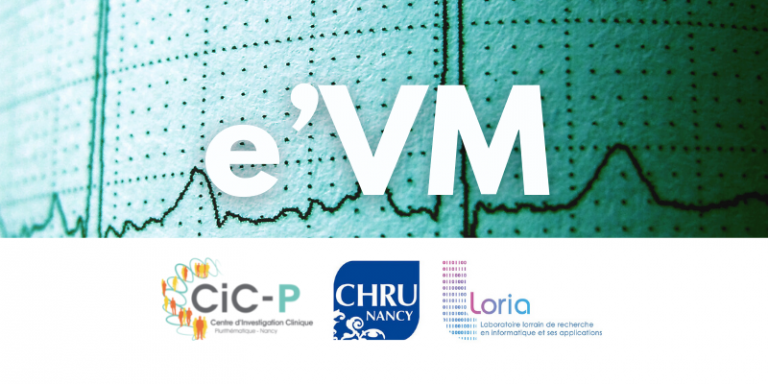
The result of scientific work carried out over the last 3 years by teams from the Nancy CHRU (Centre d’Investigation Clinique – Plurithématique) and Loria, e’VM is a new tool for predicting the risk of heart failure. Created with Artificial Intelligence from the study of data from the Stanislas cohort, it has just received its scientific validation through the publication of an article in the leading journal in cardiological imaging JACC Cardiovascular Imagine (publication on September 15, 2021).
Better assessment of the heart’s diastolic function
For the past 40 years, echocardiography has been used to measure variables ranging from the volume of the heart to the thickness of its walls, including the speed of blood flow and contraction. Recognized as reliable, and applied by specialists to diagnose heart failure, one of these measurements, the diastolic function of the heart, was still subject to interpretation. This evaluation of the cardiac relaxation, a determining function in the functioning of the muscle (to contract and send blood in the organization the heart must relax!), is thus the subject of constant international readjustments weakening the use of the parameters measured by cardiac ultrasound.
The creation of e’VM (e’ = cardiac relaxation index, V = Volume, M = Mass)
The algorithm is based on “clustering” machine learning (an AI technique): this technique has constituted, from echocardiographic data, homogeneous groups of individuals in the Stanislas Cohort, promoted by the Nancy CHRU. The 3 typical profiles thus constituted can be predicted by a simple algorithm based on echographic criteria commonly used in routine. These profiles, when applied to the Malmo population cohort (Sweden – Prof. Martin Magnusson), effectively predict the risk of heart failure in the years following the ultrasound scan. Thanks to this new tool, cardiologists can now better predict the risk of heart failure, either in a classical way (thanks to the e’VM decision tree), or in a more complex but more reliable way by an application predicting the typical profile.
An open source shared innovation
Prof. Nicolas Girerd, cardiologist, who coordinated this project involving research teams from the CHRU and Loria within the framework of the RHU FIGHT-HF , insists on the clinical application of the algorithm: “The e’VM algorithm can be used right now by everyone. The more elaborate version is also available in open source on the reference platform for university software development, GitLab. Its use has an obvious clinical translation: for us, these 3 groups homogenic echocardiographic groups will facilitate the prediction of so-called “diastolic” heart failure. “diastolic” heart failure. These results could eventually lead to changes in echographic recommendations, once our concept has been confirmed through other cohorts. The clinical objective is to identify patients at risk of heart failure, very early on in patients aged 50 to 70, because diastolic heart failure is a pathology that is not yet well treated. Prevention is therefore better than cure, which is what VM can help us with. Therapeutic strategies in these at-risk patients can be tested in the future in clinical trials.”
Translated from e’VM : Un algorithme prédictif de l’Insuffisance Cardiaque créé à Nancy avec l’IA









